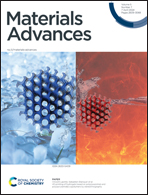Modifications of polyalkenoic acid and its effect on glass ionomer cement
Abstract
Over the past few decades, glass ionomer cement (GIC) has played a pivotal role in dental restoration. GIC has many advantages over other restorative materials including biocompatibility, dental adhesion, aesthetic features, and anticariogenic activity. In addition, GIC can favour remineralisation and reduce the resistance of enamel and dentine towards demineralisation. However, many limitations of conventional GIC including reduced compression and diametrical tensile strength, reduced surface characteristics, brittleness and sensitivity towards moisture when placed first in the mouth retarded the wide applications of GIC in clinical dentistry. Active research is still ongoing to overcome the limitations of conventional GIC. The current review focuses on different modifications of polyalkenoic acid and its effects on improving the physicochemical properties of GIC.

- This article is part of the themed collection: Recent Review Articles


 Please wait while we load your content...
Please wait while we load your content...